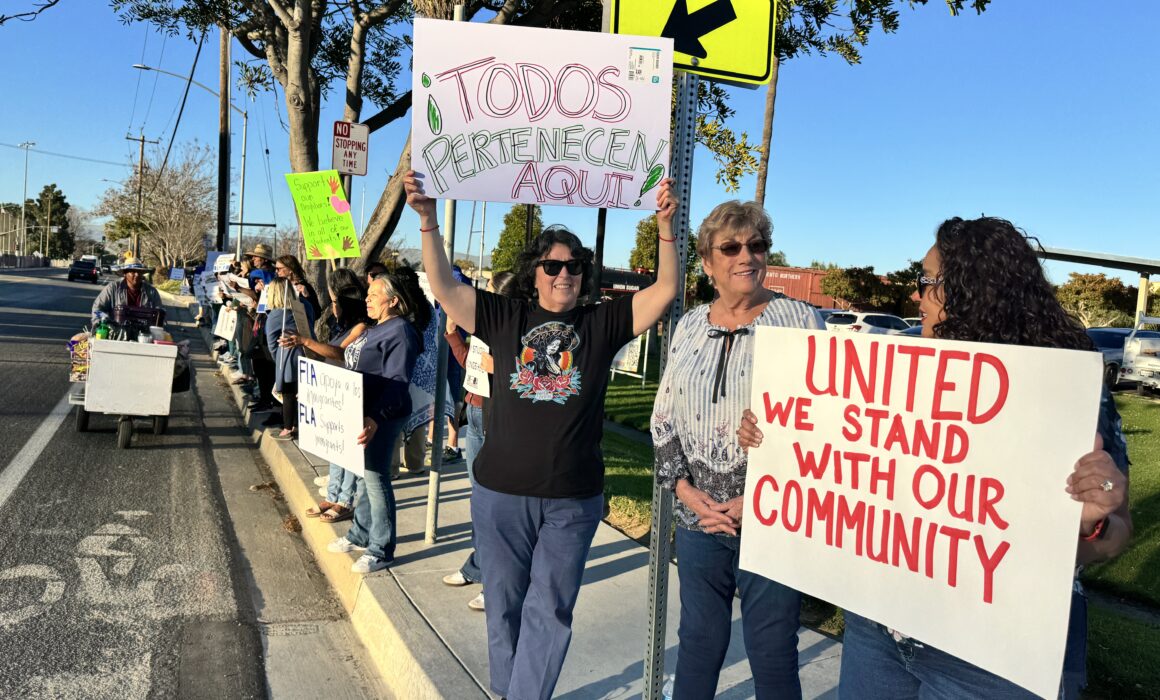
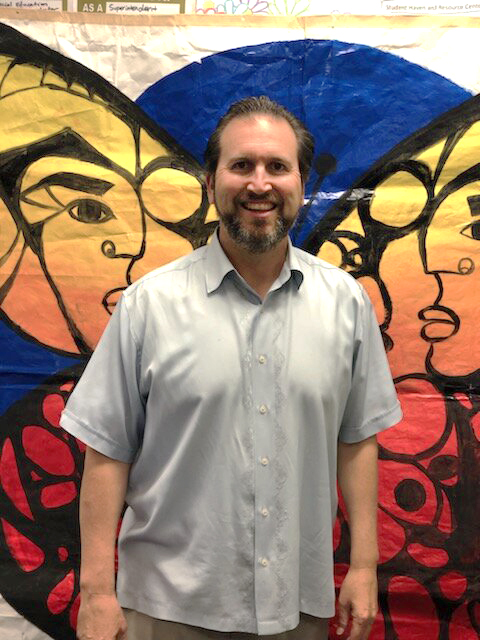
Javier Gutierrez, social science teacher, Alhambra Teachers Association
“I ’M NOT LEAVING my students or these vulnerable communities. As educators, we are dedicated and we stay true to the fight,” says Javier Gutierrez, social science teacher and member of Alhambra Teachers Association (ATA). “We have to be present — I’m not going away and I’m not going to be quiet!”
“ Our union will use our collective power to defend against any threats to our beautiful and diverse communities.” — CTA President David Goldberg
Since the return of President Trump in January, our students, families and public education have been under attack by extremists and billionaires who are working to privatize our schools, cut education funding and hobble crucial services. The Trump Administration has unleashed a flurry of executive orders aimed at our most vulnerable students and communities, and our government structures that support and protect these groups, including attempting to destroy the U.S. Department of Education (ED).
Across California, educators are organizing to defend our students, families and schools.
“We will continue to defend the rights of every student to schools that are safe and free from harassment and discrimination,” says CTA President David Goldberg. “We are committed to protecting every single student — regardless of where they were born or how they identify or who they choose to love. Our union will use our collective power to defend against any threats to our beautiful and diverse communities.”
Across the state, educators in their local unions are fighting for the rights and well-being of all students, and the resources they need for the public schools they deserve. Near the Arizona border in Blythe, special education teacher Luis Benvenutti is working hard to defend the community’s most vulnerable kids. He urges fellow members to lead the way in their communities to protect a public education system that serves everyone.

Javier Benvenutti, SDC teacher, Palo Verde Teachers Association
“You need to stand up and fight back. If we just accept what people think is inevitable, it will hurt everyone and create an even more difficult environment for teachers and students,” says Benvenutti, a member of Palo Verde Teachers Association (PVTA). “They want to privatize education. What’s going to happen to our most vulnerable? Immigrant kids? Exceptional children? We want to have a quality education that is for everyone. This fight is all about participation, so get on it, you know? Don’t wait to get active because it’s already scary times.”
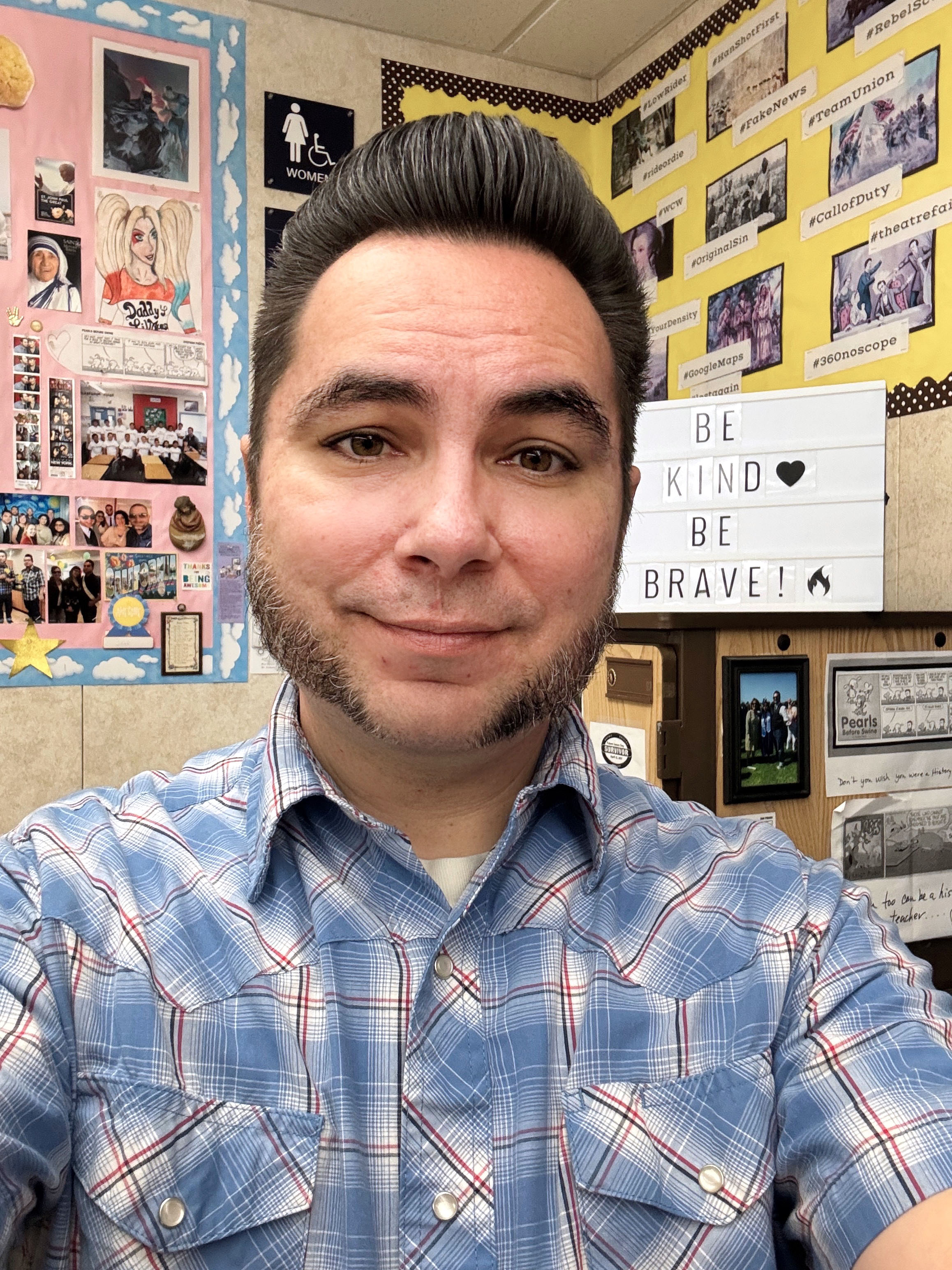
Jose Rodriguez, history teacher, Santa Maria EEA
Home is Here
“Every kid who comes here is our kid. This is not political for us,” says Jose Rodriguez, history teacher and member of Santa Maria Elementary Education Association (SMEEA). “This is our calling as educators and of course we’re going to protect our students. Whether they’re documented or undocumented, all these students belong to us.”
Educators took action in solidarity with their students in Santa Maria in February, helping to organize a community rally in support of students and families who immigrated here and calling on their school board to adopt a resolution of district commitment to not cooperate with ICE raids on school campuses or share information about students with agents. Rodriguez says students had been organizing to protest Trump’s executive orders on immigration and to ask the city council to establish a sanctuary zone around schools when educators stepped up.

SMEEA members called on their school board to adopt a resolution directing the district to not comply with enforcement attempts by Immigrations and Customs Enforcement agents.
SMEEA members and their families joined students in a public display of support before marching to a school board meeting. Rodriguez says he was excited to see other unions, community organizations, families and neighbors chanting, holding signs and leading the fight for safe schools for all.
“It was great to see all the different organizations come out
to support our students,” says Rodriguez. “Our kids were already doing walkouts on their own, and I knew we had to do something to support them. I saw what educators did in Alhambra to rally for their students and showed [this to] our members to encourage and inspire them to participate.”
Educators in Alhambra rallied to support safe spaces for their students and families shortly after the return of Trump and his hateful words, policies and attacks on people who immigrated to the United States. ATA’s Gutierrez says the effort started eight years ago when Trump was first elected and unleashed widespread attacks on America’s immigrant communities. Educators in Alhambra mobilized then and created the “Dream Center,” a safe space for all students at Alhambra High School.
This center provides support, activities and resources to students,
including school community-building events and legal clinics with immigration attorneys on hand to answer questions. Gutierrez says the Dream Center was part of a deliberate effort by ATA members to create safe places for students in vulnerable communities, including students who are immigrants, LGBTQ+, unhoused, and students with disabilities, which has now spread to the district’s other two high schools.
“Our union has been super supportive of the creation of these centers. We got grants from CTA to build these centers and we got active in elections in our community. We revamped who was leading our schools and who was leading our community, so when this election happened, we were ready to go,” he says.
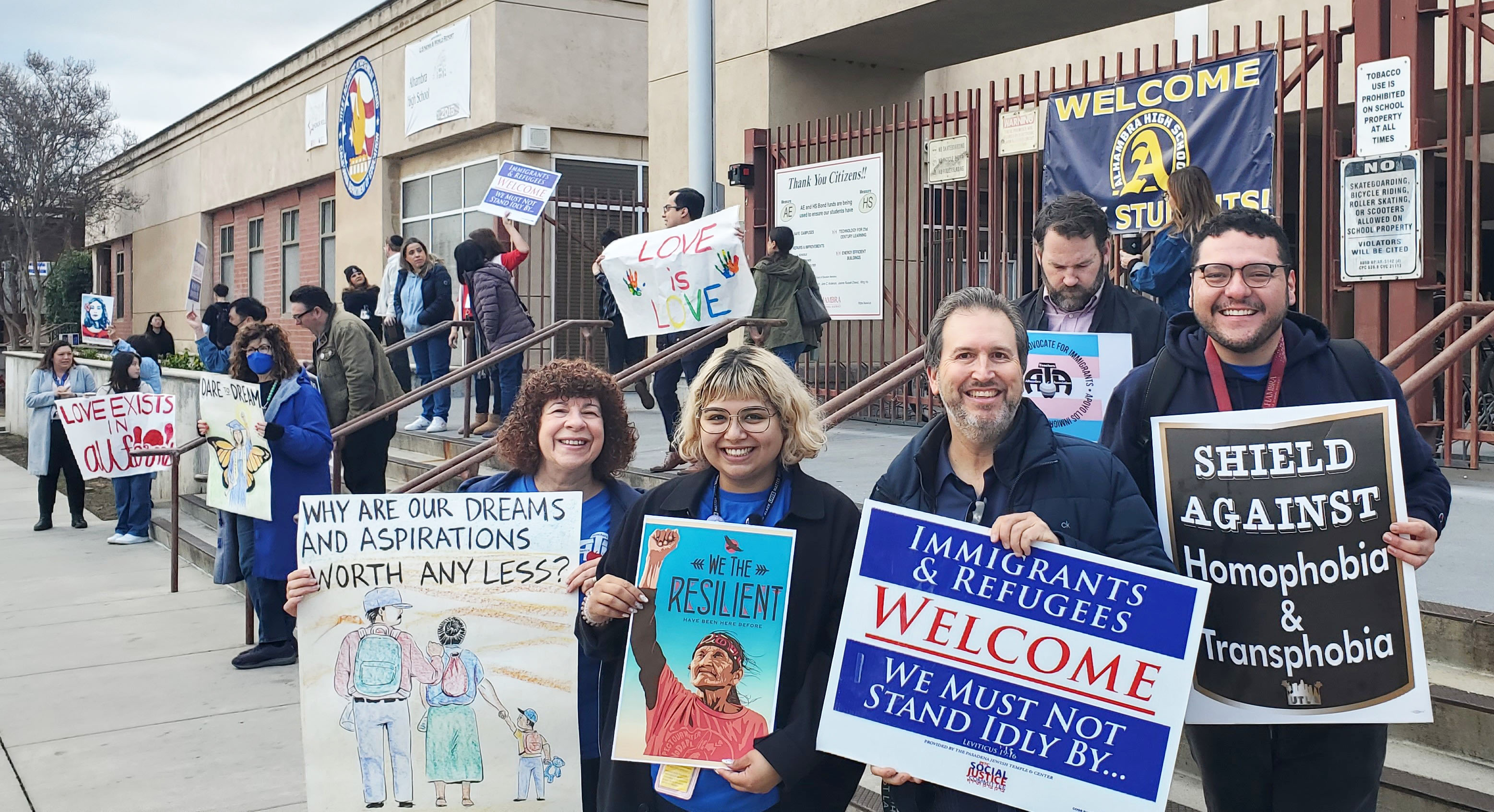
The Alhambra march is one of many unity events planned this year to lift “unheard voices.”
Alhambra educators, students and families marched in support of the immigrant community in February, leaning into the network of allyship and advocacy that ATA has been building for the past eight years. The event was one of many planned this year, including ally lunches and “out of the shadow” events to share unheard voices. Gutierrez says that when the call went out to support the Alhambra immigrant community, ATA members jumped to action for their students.
“We need to be showing our students and demonstrating how to do civil disobedience effectively and make positive change in our community,” he says. “We’re showing students a time-honored tradition of speaking out against injustice and a path forward of non-violence and civil disobedience. And then the message is ‘you’ve got a safe space here — you have people who have got your back.”
The work continues to lift student voices and advocate for their rights and opportunities to succeed. Gutierrez says he’s proud of this collective effort and grateful to be a part of it.
“It’s never one-and-done with these things. It’s building that network and community — grassroots, from the ground up. This is the collective expression of our school community and part of a larger movement,” he says. “I’m grateful to come to school every day and work with young adults, be a part of this movement and work to further it.”
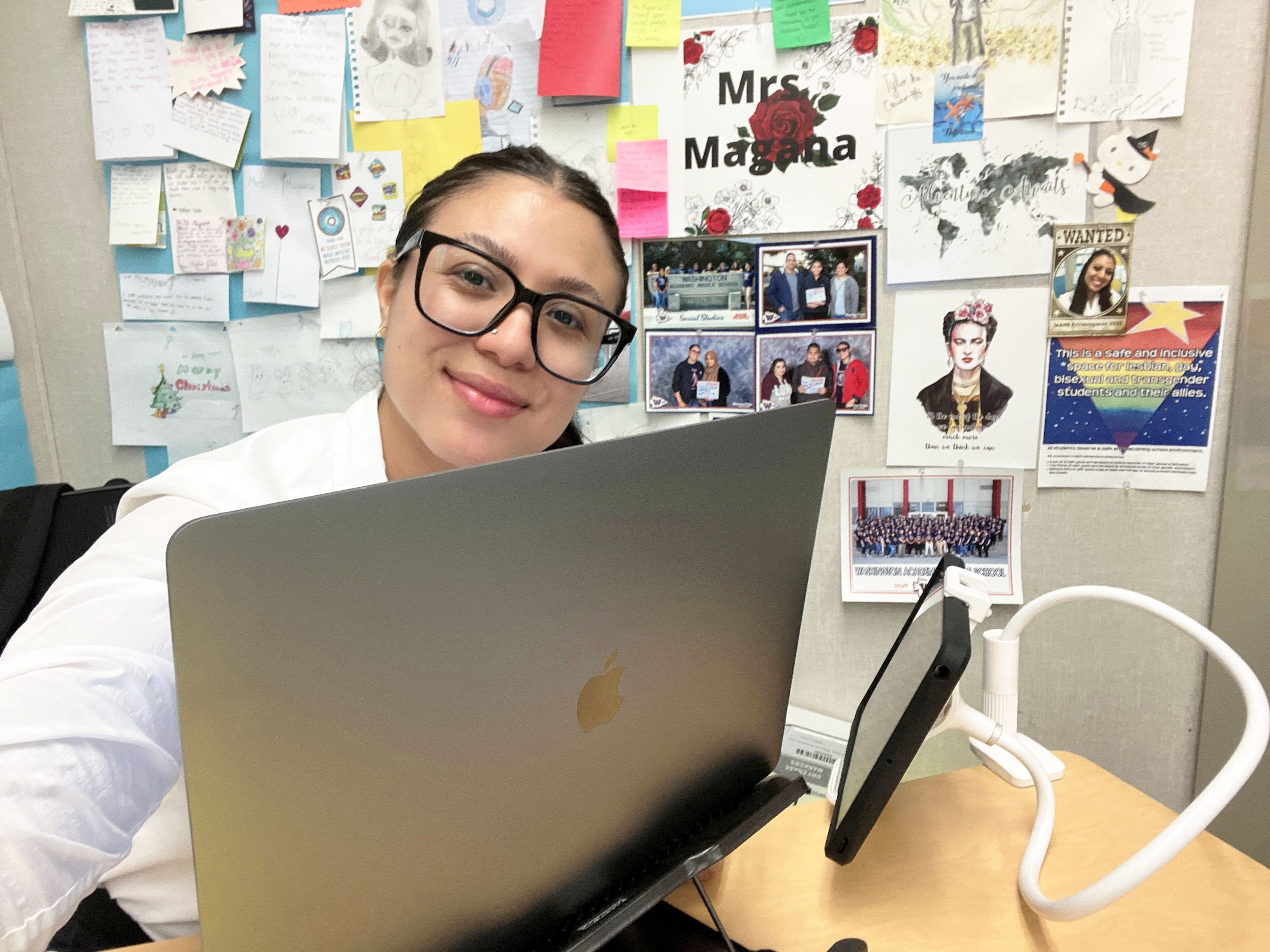
Mikaela Magaña, Sanger Unified Teachers Association
Creating Safe and Brave Spaces for All
“Who is going to fight for you when you’re under attack? We need to defend, protect and uplift each other, especially our most vulnerable,” says Mikaela Magaña, a high school history teacher and member of Sanger Unified Teachers Association (SUTA).
Magaña was shocked when she was told to remove the Pride flag from her classroom in late 2022, with administrators citing a new school board-approved policy and deeming the flag “controversial.” Other educators at Sanger West High School were also told to remove LGBTQ-inclusive flags and posters from their classrooms, some of which had been on the walls for years. The school board had quietly approved the extreme policy a few months earlier without notifying SUTA of the unilateral change.
Educators compiled information about where and how the policy was being enforced in schools throughout the district, eventually filing a complaint with the Public Employment Relations Board (PERB) and winning late last year. An administrative law judge found that the school district violated the law in several ways: 1) The policy was so vague and broad that it could also include banning union symbols; 2) the display of Pride flags and posters is protected activity; 3) the unilateral change was subject to bargaining; and 4) the district failed to provide information to SUTA in a timely manner.
“While I’m happy we won the case, this is just the beginning of continued efforts of educators to support all of our marginalized
students,” Magaña says. “This is just the beginning of a marathon that we will be confronting over these next four years. Even though we won this case, people are still afraid of putting up their flags because of potential retaliation. Especially with the current presidential administration, we don’t know what’s going to happen.”
According to Magaña, the school district’s extreme policy is in line with the district’s historical lack of support for LGBTQ+ students, including cancelling a student-organized Pride Week celebration. She said her students noticed the Pride flag in her classroom disappear and many of them organized to fight back against the policy, speaking their truth at a school board meeting — one student told trustees “my life is not controversial.”
Magaña says fighting this policy and supporting her students meant honoring her commitment as an educator.
“We learn so often in our prep programs that as teachers we’re supposed to be agents of change and this was me following through on that commitment,” she says. “I was thankful for that. Nervous of course, but it was necessary.”
Having support in this fight from her union and CTA legal staff meant everything to Magaña, reaffirming her decision to speak out. She recommends building a support network of like-minded colleagues with similar values to protect safe and brave spaces for all.
“We need to build community, get to know each other and build a strong foundation so we don’t feel isolated,” Magaña says. “Show up for your students, whether it’s providing Know Your Rights cards in classrooms or being someone who listens when they’re experiencing something and connects them with resources.”
Protecting Special Education Resources
“What is happening at the federal level is extremely scary, because they’re bullying the children who need the most,” says PVTA’s Benvenutti. “If we stay united, not just as a union but with parents and community, we can get greater results. It’s scary times, regardless.”
Benvenutti is building a movement to defend students with disabilities and the special education resources they deserve in Blythe, deep in the low desert. The special day class teacher worked to form a Special Education Committee in his local to better advocate for his students.
“We are looking into a lot of things that are impacting our classrooms. A lot of us don’t have hard caps — last year, I had 20 students,” says Benvenutti. “Our students are not getting a quality education. We don’t have enough subs, so our teachers aren’t participating in IEPs (Individualized Education Plans). How is that what’s best for students? We’ve been very vocal about it, participating in board meetings and making our voices heard.”
Special education services and resources are under threat nationally by Trump, who signed an executive order directing the destruction of the U.S. Department of Education (ED). Many educators fear this is the beginning of attacks on students with disabilities and special education — ED is responsible for funding and oversight of these programs across the country, and for stepping in when states don’t provide these students with a fair and appropriate public education as legally required. California receives about $8 billion in federal
funding annually, in addition to $2.1 billion in Title I grants to ensure students living in poverty have access to support to help them succeed.
Benvenutti says educators need to sound the alarm and defend ED
and our students.
“It has to start with educating the vast majority of the population
about how what they’re doing is wrong, not just legally but also morally and ethically, and that kids aren’t getting what they deserve,” he says. “That’s how we can make some movement. We know that the next four years are going to be nonsense, so we need to do what we can to fight back.”
Supporting some of our most vulnerable students requires collaboration, which Benvenutti would like to formalize with the
creation of a joint union-district special education committee to be able to discuss issues and concerns before they escalate.
“Also, it could be helpful to get the community involved in this committee, so that we are all working together for our most vulnerable children,” he says, adding that PVTA is also exploring ways to provide education, training and development on special education issues to parents. “A parent who is knowledgeable is a kid who is successful.”
While the community is mostly conservative, Benvenutti says it doesn’t seem like the political affiliations determine how people feel about supporting students in special education.
“You might see a lot of Trump flags around town, but when it comes to education and exceptional children, there is a lot of support,” he said.

On March 19, Charter Oak Educators Association members held walk-in rallies to support their schools, students and ongoing bargain.
In March, educators nationwide held “walk-in” rallies before school started in the morning to show support for ED and the crucial services provided by its staff. In communities including Charter Oak, Glendale and Sacramento, CTA members joined students and families in rallying for the federal education support our public schools need.
“The bottom line is we need to create a better environment for
our children and our jobs,” Benvenutti says. “We are educators
and we want the best for our kids.”
Pro Tips for Support Students Under Attack
“ Make sure to rest whenever you can, surround
yourself with community and do things that
sustain the fight. Understand that everyone’s
collective effort will make the difference we
want to see and will prevent us from regressing
as a society.” — Mikaela Magaña, SUTA“ Find like-minded organizations in your community who can join you — there’s strength in numbers. Have a strong active Political Action Committee. When we elect school board members who are willing to do what’s best for students and not push extremist policies, we can build power to protect our students.” — Jose Rodriguez, SMEEA
“ People come all the time to visit our Dream Centers and they think they can put one together easily, but that’s not how it happens. It’s a long-term grassroots campaign. If we really want to effect change, it’s going to take a long time, and a lot of dedication and support. We don’t leave — we stay dedicated and true to the fight. We aren’t silent. We speak up and get involved.” — Javier Gutierrez, ATA
“ Get involved. We have 100% of our teachers as members in our union, but unfortunately not 100% participate. Engage your members and show them how ongoing issues affect them, directly or indirectly.” — Luis Benvenutti, PVTA
For more information and ways you can help, visit cta.org/homeishere.
The Discussion 0 comments Post a Comment